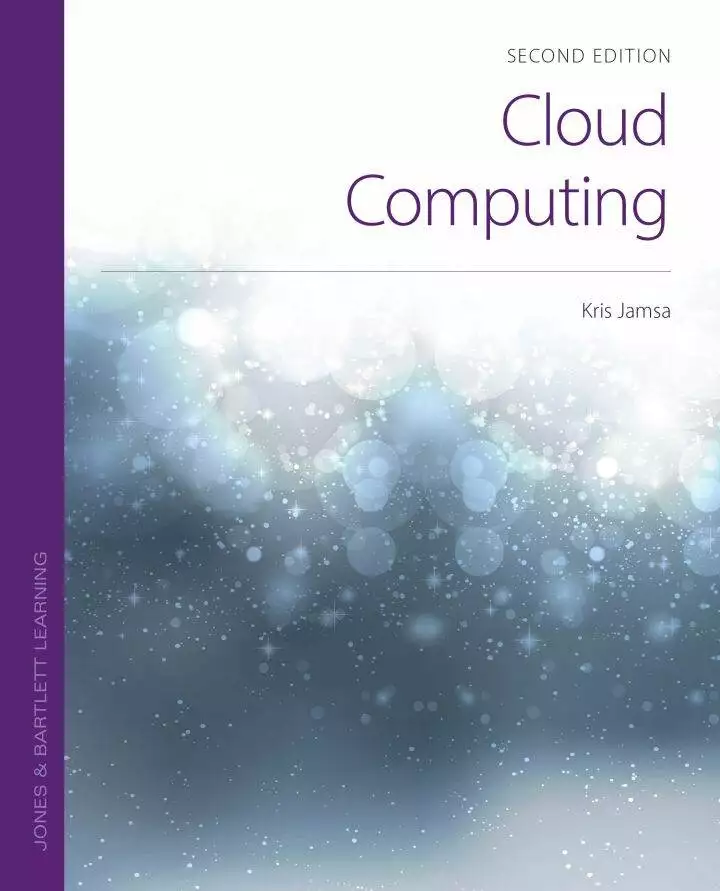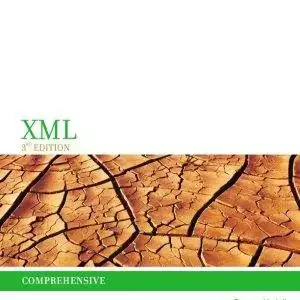In the world of software development and network administration, the concept of a cloud has long been used to represent the complex network of communication between computer networks. Over time, however, the definition of the cloud has expanded to include physical and virtual processors, data storage, software-as-a-service solutions, and mobile applications. The rise of cloud-based applications and capabilities has brought numerous benefits such as reduced costs, pay-for-use models, scalability, improved performance, redundancy, and enhanced business continuity. However, these advantages are accompanied by increased security challenges and IT governance concerns. This ebook, “Cloud Computing, 2nd Edition” (ePub/PDF), takes an in-depth look at all these issues. It is important to note that the potential of the cloud is far from fully explored, and its dynamic nature will likely continue to evolve.
Chapter 1: Introducing Cloud Computing
This chapter introduces the abstract nature of cloud computing and explores the factors that led to its evolution. It discusses three key cloud computing models: software as a service (SaaS), platform as a service (PaaS), and infrastructure as a service (IaaS). Real-world examples are provided to illustrate each model. The chapter also highlights the advantages of cloud computing, including scalability, redundancy, low cost of entry, and virtualization.
Chapter 2: Software as a Service (SaaS)
This chapter delves into browser-based SaaS solutions and their benefits. It showcases real-world examples of SaaS applications, such as SalesForce.com for customer relationship management, Taleo for human resource solutions, and ADP for SaaS-based payroll processing.
Chapter 3: Platform as a Service (PaaS)
PaaS refers to cloud-based hardware and software platforms that allow companies of all sizes to quickly and cost-effectively migrate their applications to the cloud. This chapter explores PaaS providers like Amazon, Google, and Microsoft.
Chapter 4: Infrastructure as a Service (IaaS)
The concept of IaaS revolves around cloud-based data centers that eliminate or reduce the need for large in-house data centers. IaaS providers leverage economies of scale to significantly lower a company’s IT operations costs.
Chapter 5: Identification as a Service (IDaaS)
IDaaS focuses on cloud-based identity-management solutions that simplify user provisioning and resource access. By distributing solutions across the cloud, IDaaS facilitates easy sign-on processes for users across multiple solution providers.
Chapter 6: Data Storage in the Cloud
This chapter explains the integration of cloud-based data storage and the evolution of network-based storage. Various cloud-based data storage solutions are examined, which can be accessed at little or no cost. Additionally, low-cost, turnkey cloud-based backup solutions are explored.
Chapter 7: Collaboration in the Cloud
Cloud-based technologies that enable collaborative work among multiple users are discussed in this chapter. It traces the evolution of collaboration tools, from instant messaging to virtual meetings, and to shared documents that support simultaneous editing by multiple users.
Chapter 8: Virtualization
Virtualization involves creating the perception of one or more entities that may not physically exist through hardware and software. This chapter examines solutions for virtual servers, desktops, and networks.
Chapter 9: Securing the Cloud
While the advantages of the cloud are numerous, security concerns remain a top priority. This chapter explores the specific security threats and measures that should be taken to minimize the occurrence of these threats. It addresses the hesitation of individuals and organizations to entrust their data to the cloud.
Chapter 10: Disaster Recovery and Business Continuity and the Cloud
This chapter discusses how leveraging the redundant resources of the cloud enhances a company’s ability to recover from and continue operations after a disaster or severe event. It examines common threats to business operations and how the cloud can mitigate them.
Chapter 11: Service-Oriented Architecture
The availability of web-based services is revolutionizing the way developers create and deploy programs. This chapter explores a variety of real-world web services that programmers can integrate into their applications.
Chapter 12: Managing the Cloud
After a company migrates its applications to the cloud, management tasks include auditing logs, monitoring system performance, and identifying bottlenecks in data flow. This chapter delves into the responsibilities of a manager in leveraging the cloud effectively.
Chapter 13: Migrating to the Cloud
Before migrating a solution to the cloud, careful evaluation is necessary. Considerations include avoiding vendor lock-in, understanding remote data backup operations, addressing security concerns, preparing a budget, and providing developer and user training. This chapter covers these considerations comprehensively.
Chapter 14: Mobile Cloud Computing
This chapter evaluates whether mobile computing is driving the growth of cloud computing or vice versa. It examines the “ecosystem” of mobile computing and discusses popular cloud-based mobile apps.
Chapter 15: Governing the Cloud
IT governance and its extensions for cloud-based computing are discussed in this chapter. It examines the need for and ways to implement cloud-based internal controls.
Chapter 16: Evaluating the Cloud’s Business Impact and Economics
This chapter explores how the cloud’s economies of scale and pay-for-use model accelerate the release of cloud-based solutions for companies of all sizes. It also evaluates the cloud’s impact on operational and capital expenses.
Chapter 17: Designing Cloud-Based Solutions
While many existing applications can be moved to the cloud, this chapter emphasizes the importance of designing cloud-based solutions to fully utilize scalability and redundancy. It discusses various design considerations and how the cloud affects them.
Chapter 18: Coding Cloud-Based Applications
Developers and users can place content in the cloud. This chapter provides a step-by-step guide for developers to place their solutions in the cloud.
Chapter 19: Application Scalability
Scalability is crucial for applications to handle increasing workloads. This chapter examines vertical and horizontal scalability, along with the considerations designers should take into account when designing scalable applications.
Chapter 20: The Future of the Cloud
The cloud’s reach extends beyond traditional computing devices. This chapter explores how the cloud will integrate with cars, televisions, appliances, and even clothing. It highlights the vast potential of the cloud that is yet to be fully realized.
New to This Edition
The second edition of this book prepares readers for the CompTIA Cloud+ Certification, which covers cloud specifics, operational aspects, and functionality. Real-world scenarios are used in the certification exam to test knowledge of cloud deployment, optimization, scaling, security, and more. Each chapter includes questions to help readers prepare for the exam. The Cloud+ Certification is highly regarded by employers and serves as validation of technical skills and knowledge. It is recommended that readers review the questions at the end of each chapter and take the exam after completing the book.
Cloud Labs
Cloud Labs are hands-on virtual labs that provide immersive learning experiences for foundational cybersecurity skills. These labs extend the lessons in the book and offer simulated IT infrastructures for practice. For more information or to purchase the labs, visit go.jblearning.com/cloudcomputing2e
ISBN: 978-1284233971, 978-1284233988, 978-1284264937, 978-1284264944, 978-1284233995, 978-1284264951
To view the ePub ebook, it is recommended to use the free Adobe Digital Editions (for Mobile devices) or Calibre (for Windows/Mac).
Please note that this product includes Jamsa’s eBook “Cloud Computing 2nd Edition” in the original ePub format. A converted PDF is also included. Access codes are not provided with this product.




